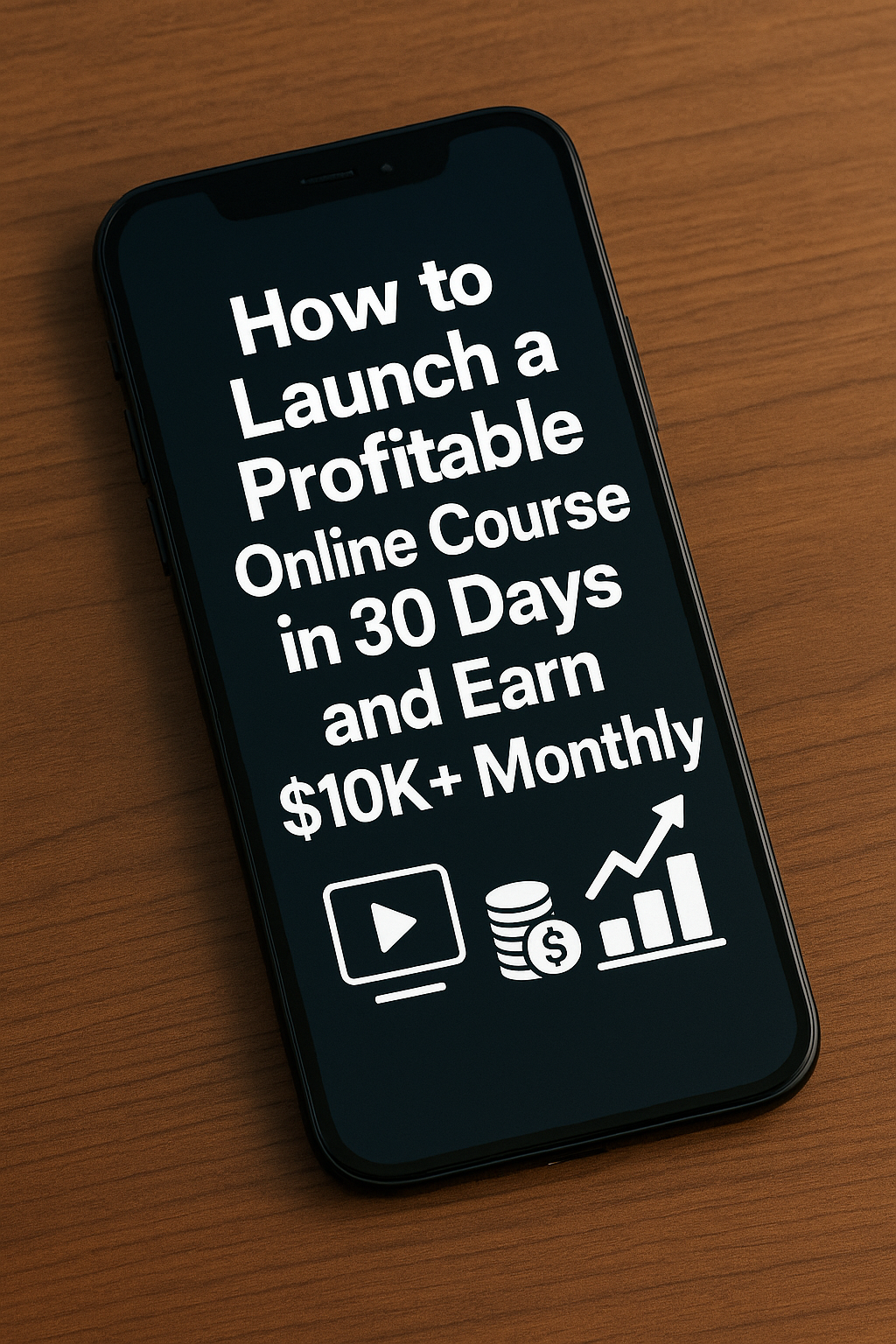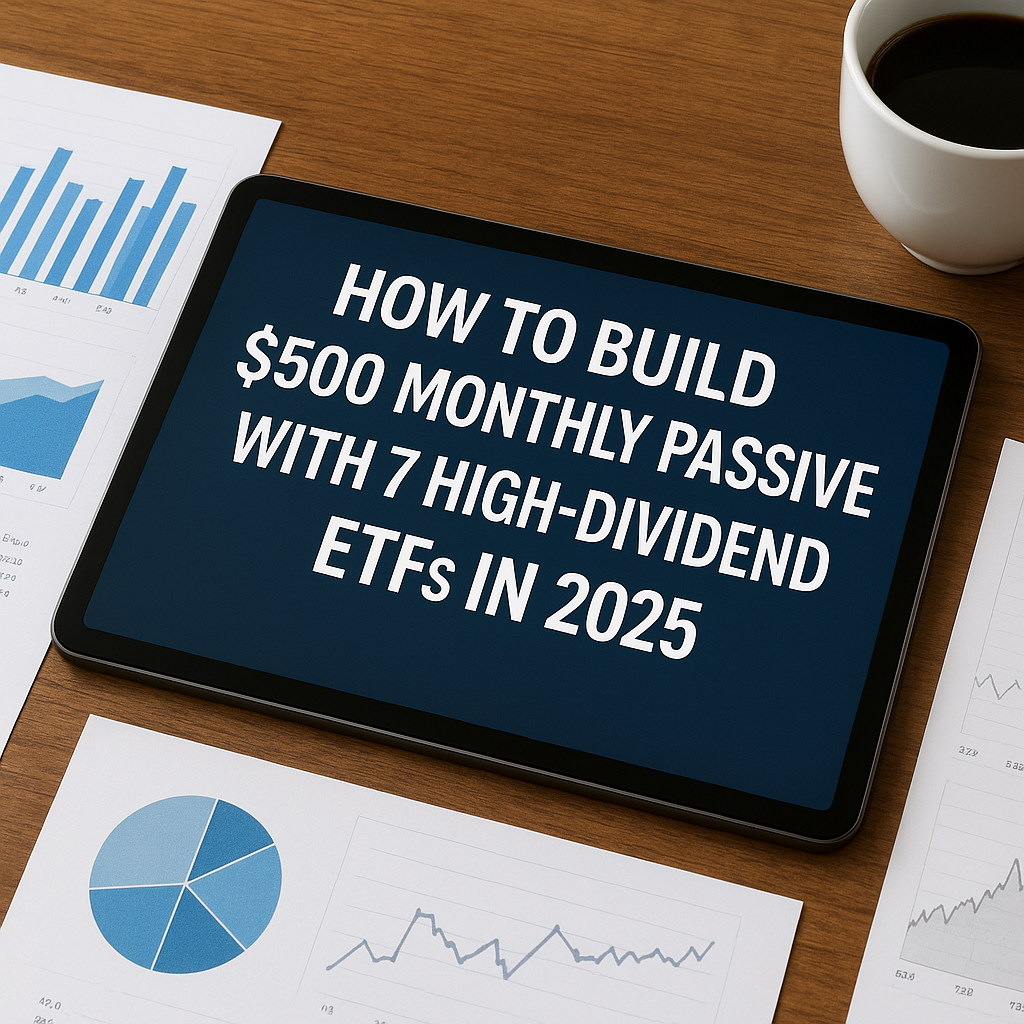Creating and selling online courses is one of the most lucrative digital entrepreneurship models in 2025. With platforms like Teachable, Kajabi, and Thinkific, even solo creators can package expertise into high-value learning experiences that generate recurring revenue. But the difference between a $0 launch and a consistent $10,000+/month course often comes down to a disciplined 30-day roadmap, smart positioning, and traffic-driving strategies.
This guide lays out a step-by-step, day-by-day plan to go from zero to launch in 30 days—then scale to $10K+ monthly within three months. We’ll cover:
- Market Research & Niche Validation
- Curriculum Design & Content Production
- Platform Setup & Payment Integration
- Audience Building & Pre-Launch Marketing
- Launch Week Execution & Sales Funnels
- Post-Launch Scaling & Automation
- Pricing Strategies & Upsells
- Tools, Templates & Case Studies
- FAQs & Pitfalls to Avoid
By following this blueprint, you’ll minimize wasted effort, maximize student engagement, and unlock predictable high-ticket sales—all within one intensive month.
1. Days 1–7: Market Research & Niche Validation (≈200 words)
1.1 Identify Your Expertise
- List 3–5 areas where you have proven success or credentials.
- Check Google Trends and Ahrefs for search volume (≥1,000 monthly searches) on related keywords.
1.2 Validate Demand
- Surveys & Polls: Send a 5-question survey to your email list or social media followers.
- Competitive Analysis: Audit top 3–5 existing courses on Udemy/Skillshare—note topics, price points ($100–$500), student counts, and review themes.
1.3 Define Your Avatar
- Age, occupation, pain points, budget, learning preference (video vs. text).
- Create a one-page “Student Profile” to guide content tone and marketing messaging.
1.4 Pre-sell Interest
- Craft a landing page with headline, brief curriculum outline, and “Join Waitlist” form.
- Promote via social channels and small ad spend ($50 total) to gauge clicks and signups—aim for 100+ waitlist members.
2. Days 8–14: Curriculum Design & Content Production (≈250 words)
2.1 Outline Your Module Structure
- Break course into 5–7 modules, each with 3–5 lessons (total 20–30 lessons).
- Example:
- Module 1: Foundations & Mindset
- Module 2: Content Planning & Scripting
- Module 3: Recording & Editing
- Module 4: Hosting & Platform Setup
- Module 5: Marketing & Launch
- Module 6: Upsells & Community
- Module 7: Scaling & Automation
2.2 Script & Storyboard Lessons
- Write bullet-point scripts (300–500 words) per lesson.
- Sketch simple slides or use templates in Canva/Google Slides.
2.3 Record Video Content
- Setup: Ring light, USB mic, neutral background.
- Batch Production: Record 3–5 lessons per session—use OBS or Loom for screen capture.
- Tip: Keep each video 5–10 minutes to maintain engagement.
2.4 Edit & Polish
- Use Camtasia or Adobe Premiere Rush to trim pauses, add lower thirds, and brand intro/outro.
- Export at 1080p MP4, 16:9 aspect ratio.
2.5 Create Supporting Materials
- Downloadable PDFs: checklists, cheat sheets, templates.
- Quizzes or worksheets in Google Forms or Typeform to reinforce learning.
3. Days 15–18: Platform Setup & Payment Integration (≈200 words)
3.1 Choose a Course Platform
- Teachable: $29/mo plan supports coupons, drip content.
- Kajabi: $149/mo for advanced funnels and community.
- Thinkific: free tier for basic courses; $99/mo for certificates.
3.2 Configure Your School
- Branding: Upload logo, set color palette, design homepage.
- Curriculum: Upload videos, PDFs, quizzes into modules.
- Drip Scheduling: Decide if you release all at once or stagger weekly.
3.3 Set Pricing & Payment
- Pricing Tiers:
- Standard Course: $197 one-time
- Premium Course + Coaching: $497
- Payment Plans: 3× $67
- Payment Gateways: Stripe & PayPal—connect your accounts, test a $1 transaction.
3.4 Set Up Sales Page & Checkout
- Craft benefit-driven headlines, testimonial placeholders, refund policy.
- Add urgency elements: “Enrollment closes in 7 days,” countdown timer widget.
4. Days 19–24: Audience Building & Pre-Launch Marketing (≈250 words)
4.1 Email Sequence for Waitlist
- Email 1: Welcome + value proposition
- Email 2: Pain point story + solution intro
- Email 3: Behind-the-scenes module preview (video snippet)
- Email 4: Early-bird pricing details
- Email 5: Final reminder to secure discount
4.2 Social Media Teasers
- Post short clips (30s) of lesson highlights on Instagram Reels, TikTok, and LinkedIn.
- Use relevant hashtags and tag influencers in your niche.
4.3 Webinar or Live Q&A
- Host a 60-minute free webinar on Zoom: deliver 3 actionable tips, then pitch your course with limited seats (50 max).
- Promote via email and retargeting ads ($100 budget on Facebook/LinkedIn).
4.4 Paid Advertising
- Google Ads: Target “buy [niche] course” keywords with $20/day cap.
- Facebook Lookalike: Upload waitlist list as seed audience; run conversion campaign to “Sign up for Waitlist.”
5. Days 25–30: Launch Week Execution & Sales Funnels (≈250 words)
5.1 Open Cart Day (Day 25)
- Send launch email: link to sales page, highlight limited-time bonuses.
- Update course FAQ to handle common objections.
5.2 Mid-Launch Push (Day 27)
- Testimonial Emails: Share early beta tester reviews or case study.
- Facebook Live AMA: Answer last-minute questions, drive urgency.
5.3 Last-Chance Reminders (Day 29)
- Email with countdown timer: “Cart closes in 24 hours.”
- Social stories with “Swipe up” direct checkout link.
5.4 Cart Close & Fulfillment (Day 30)
- Announce cart closed; welcome new students via email with onboarding instructions and community invite (Slack/Discord).
- Set up drip content if applicable.
5.5 Funnel Optimization Post-Launch
- Review conversion rates at each funnel stage: email open rates, ad CTRs, sales page sessions → refine ad copy and page headlines.
6. Post-Launch Scaling & Automation (≈200 words)
6.1 Evergreen Funnel Setup
- Convert webinar into an automated evergreen webinar with Demio or EverWebinar.
- Create a “Quiz → Recommendation” funnel using Typeform → customized course path.
6.2 Affiliate & Partnership Programs
- Recruit 10–20 micro-influencers or complementary service providers with 30% commission.
- Provide swipe files and banners; track clicks via UTM parameters.
6.3 Upsells & Continuity Offers
- Offer one-on-one coaching package ($997) or group mastermind subscription ($47/month).
- Use checkout bump tools (CartFlows, SamCart) to present at point of purchase.
6.4 Retargeting & Ad Scaling
- Install Facebook Pixel and Google Analytics—build audiences for cart abandoners, page viewers.
- Scale winning ad sets by +20% budget increments every 3 days.
7. Pricing Strategies & Upsells (≈150 words)
- Anchored Pricing: Show a “Compare Plans” table with “Basic $197” vs. “Pro $497” vs. “Premium $997.”
- Payment Plans: Reduce friction with 3× monthly payments.
- Fast-Action Bonuses: First 20 buyers get a free 1:1 coaching call.
- Bundling: Include related mini-courses or templates at a 30% discount.
8. Tools, Templates & Resources (≈150 words)
| Category | Tool/Template | Purpose |
|---|---|---|
| Video Recording | Loom, OBS Studio | Screen + face recording |
| Editing | Camtasia, Premiere Rush | Trim, captions, intros/outros |
| Course Hosting | Teachable, Thinkific | Curriculum, payments, drip content |
| Email Automation | ActiveCampaign, Mailchimp | Drip sequences, tagging |
| Landing Pages | Leadpages, ClickFunnels | High-converting sales pages |
| Analytics | Google Analytics, Hotjar | Funnel heatmaps, behavior flows |
Download our 30-day launch planner template and email swipe files at [YourDomain.com/launch-resources].
9. Case Study: From Zero to $12K/Month (≈150 words)
Background: Natalie, a digital marketing consultant, launched her “Paid Ads Mastery” course on March 1, 2025.
- Days 1–7: Validated demand via LinkedIn poll (1,500 votes), pre-sold 75 spots at early-bird $297.
- Days 8–14: Recorded 25 lessons, created 5 worksheets.
- Days 15–18: Set up Teachable school, tested payments, priced at $497.
- Days 19–24: Ran LinkedIn ads ($200 spend), built email list to 1,200.
- Days 25–30: Sold 120 seats, generated $59,640 gross.
Outcome: By month two, with evergreen webinar and affiliates, Natalie stabilized at $12,000/month. Her team now spends 5 hours/week on course updates.
10. FAQs & Pitfalls to Avoid (≈150 words)
- “What if I can’t finish in 30 days?”
- Prioritize MVP: get 3 core modules live, then add extras post-launch.
- “How many students do I need for $10K?”
- At $500 average price → 20 sales/month. With 5% CRO, you need 400 visitors to checkout gate.
- “Is paid traffic necessary?”
- Organic SEO and webinars can suffice; paid speeds results but start small.
- “How to handle refunds?”
- Define a clear 7-day money-back policy; monitor requests and address feedback promptly.
- “How often should I update content?”
- Quarterly minor updates; major overhauls annually to reflect industry changes.
Conclusion (≈100 words)
Launching a high-earning online course in 30 days is totally achievable with a structured roadmap, validated niche, and disciplined execution. By combining targeted research, professional content, strategic pricing, and automation, you can build a $10K+/month engine that scales through affiliates, evergreen funnels, and upsells. Save this 30-day blueprint, plug in your expertise, and let the system work for you—transforming your knowledge into reliable, recurring income.









